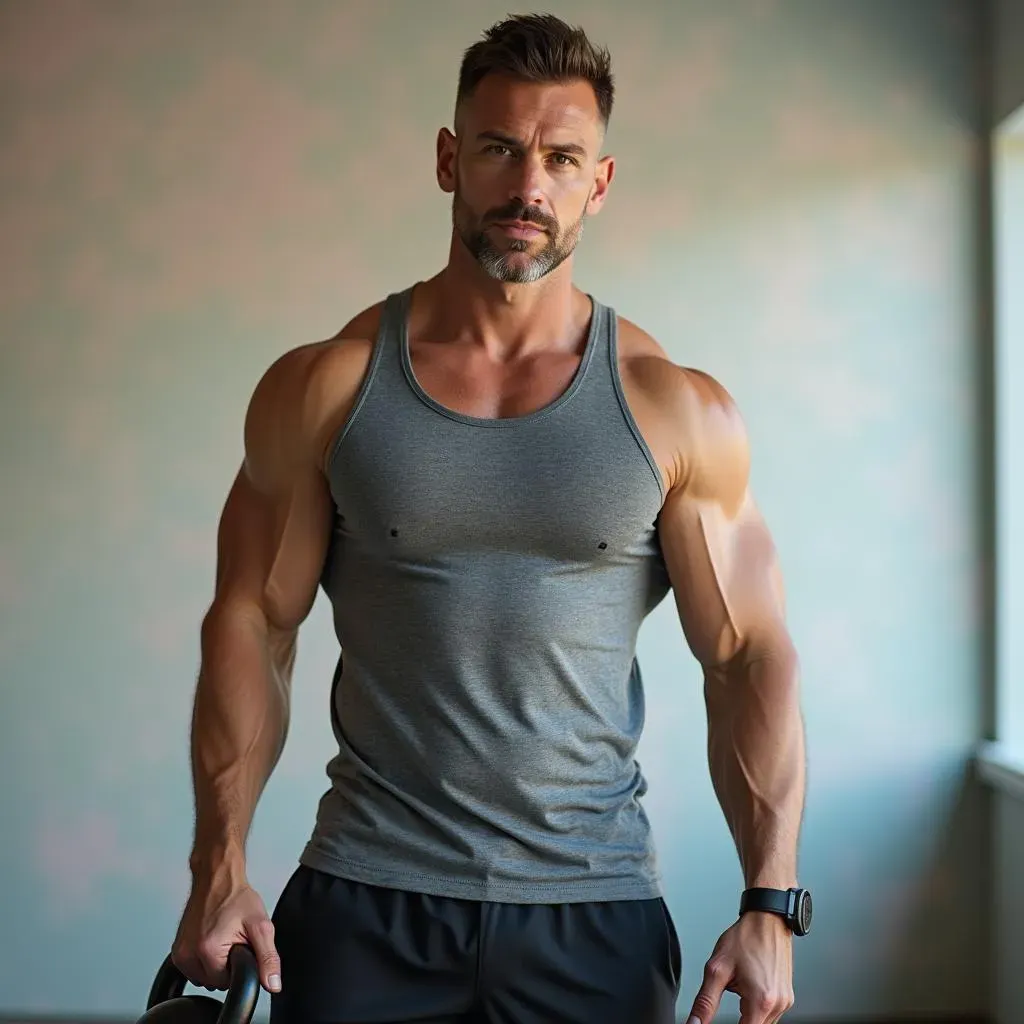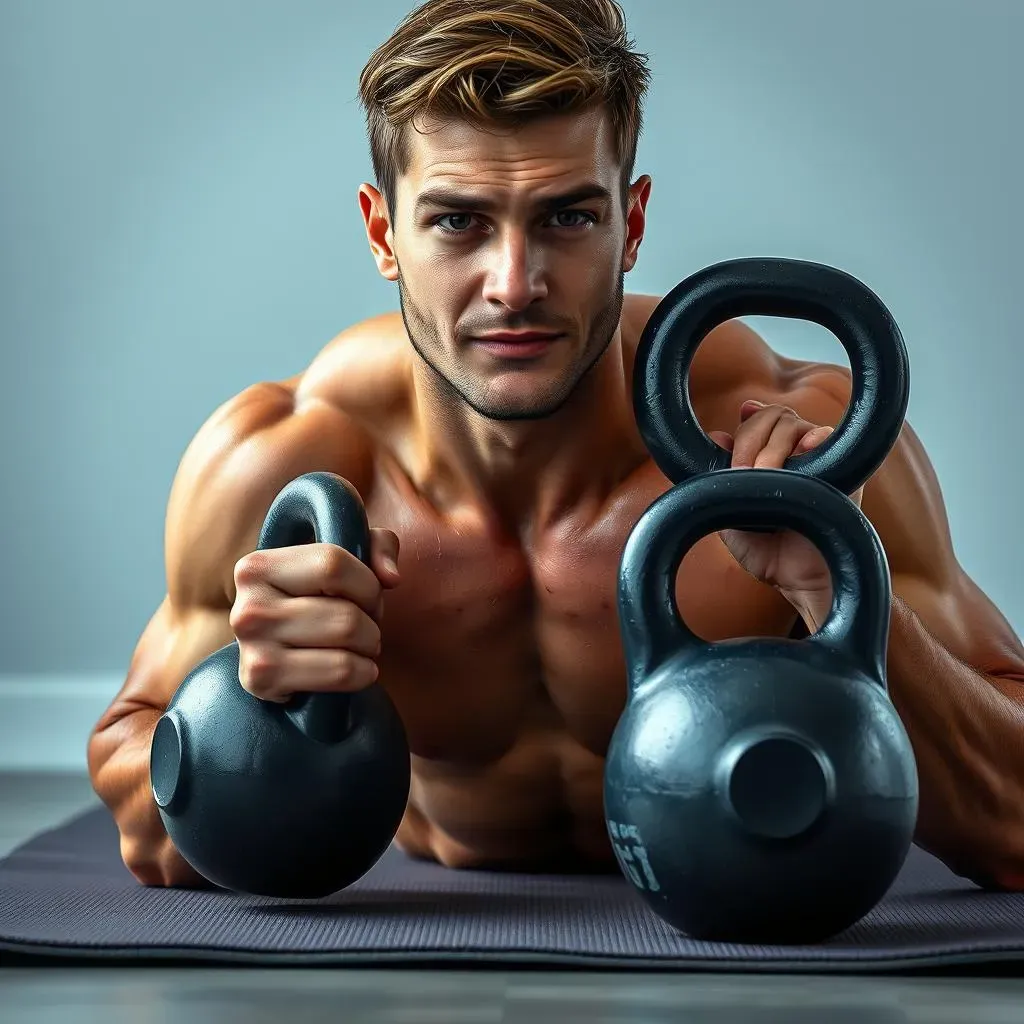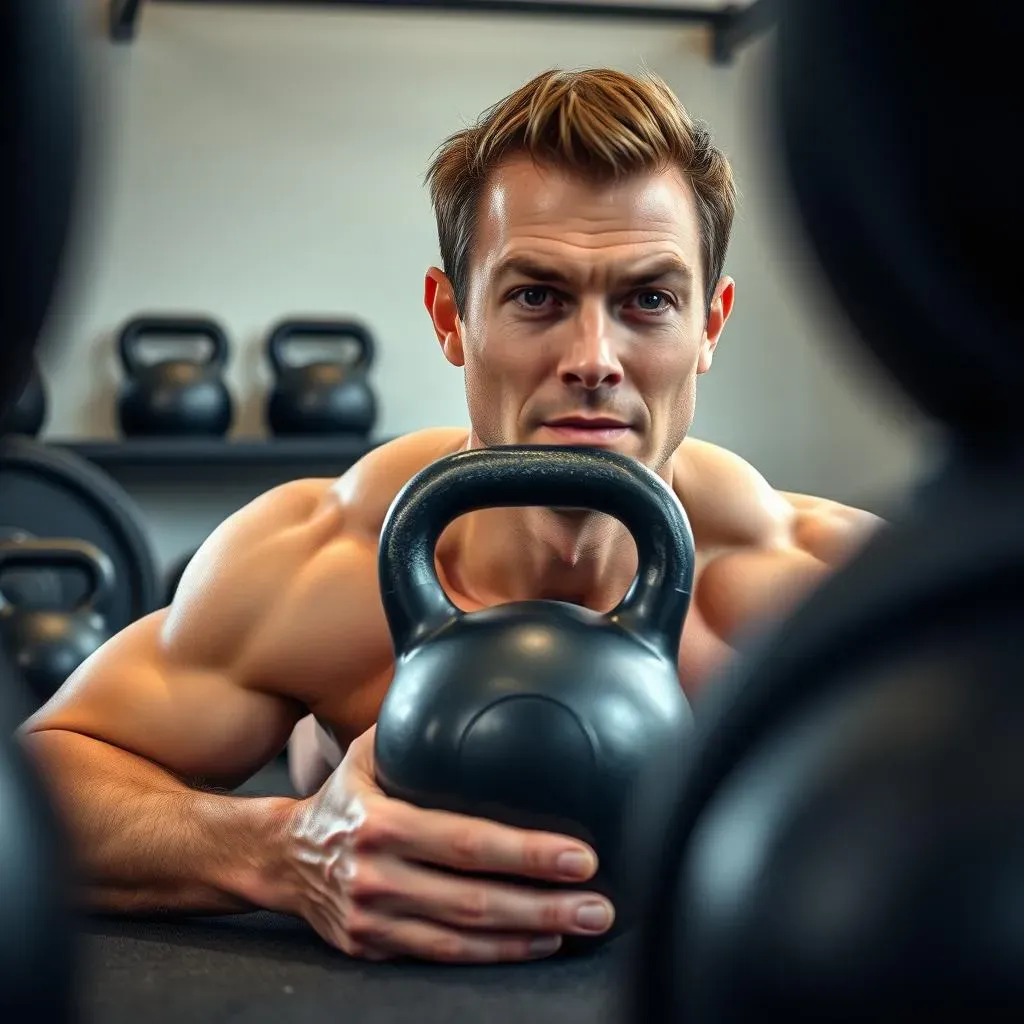Table of Contents
Tired of the same old chest exercises? Ready to shake things up and build serious strength? Then it's time to explore the world of kettlebell workouts for chest. Forget those bulky machines and endless bench presses, kettlebells offer a unique and effective way to target your chest muscles. This isn't just about lifting weight; it's about engaging your whole body, improving stability, and building functional strength. We'll start by showing you why kettlebells are a great option for chest training, then we'll move into the best exercises to get you started. We will also cover some key tips to keep you safe and how to ensure you are making progress over time. Whether you're a seasoned lifter or new to the gym, this guide will show you how to incorporate kettlebells into your routine for a more powerful chest. Let's get started!
Why Kettlebell Workouts for Chest are a Game Changer

Why Kettlebell Workouts for Chest are a Game Changer
so you're probably wondering why kettlebells for chest? I get it, barbells and dumbbells usually steal the show, but let me tell you, kettlebells bring a whole different vibe to chest training. First off, it's not just about pushing weight; it's about engaging your core and stabilizing muscles. The offset weight of a kettlebell forces your body to work harder, which means more muscle activation. This isn't just about building a bigger chest, it's about building a stronger, more functional body. Plus, the way you grip and maneuver a kettlebell is so different. It works your forearms, shoulders, and even your grip strength. So, you're getting a full-body workout while focusing on that chest. It's like hitting multiple birds with one stone, which is a win in my book.
Top Kettlebell Exercises for Chest Development

Top Kettlebell Exercises for Chest Development
Kettlebell Floor Press
let's talk exercises. The kettlebell floor press is your bread and butter here. It’s like a bench press, but on the floor, which changes things up. You’re lying down, kettlebell in hand, and you press it up. Sounds simple, right? But the floor limits your range of motion, which is actually a good thing. It forces your chest to work harder, and it's also easier on your shoulders, which is great if you've had issues in the past. Plus, it's a great way to build strength in your chest and triceps. It's my go to exercise, and I think it should be yours too.
Kettlebell Flyes
Next up, we have kettlebell flyes. These are a bit different than the press. You're still on the floor, but instead of pushing up, you're opening your arms out to the sides, keeping a slight bend in your elbows, then bringing them back together above your chest. It's like giving your chest a big hug. The flyes really target the outer chest muscles and can help with chest development, and it's a great exercise to get that full chest activation. Be careful with the weight you use, start light, because you don't want to hurt your shoulders.
Here's a quick table to compare the two:
Exercise | Primary Focus | Movement |
|---|---|---|
Kettlebell Floor Press | Overall Chest Strength | Pushing weight up |
Kettlebell Flyes | Outer Chest Activation | Opening and closing arms |
Deficit Push-Ups with Kettlebells
Last but not least, let's talk about deficit push-ups using kettlebells. This one is for when you're feeling a bit more advanced. You place your hands on the kettlebells, instead of the floor, and do a push-up. The extra height gives you a deeper range of motion which means more muscle engagement. It’s a killer exercise for chest and triceps. It also works your stability because you're trying to balance on the kettlebells. Just make sure those kettlebells are stable, you don't want to fall on your face. If you want to build a great chest, you need to push yourself, and this exercise will do just that, no joke.
Tips for Safe and Effective Kettlebell Chest Workouts

Tips for Safe and Effective Kettlebell Chest Workouts
Alright, let's talk safety and making sure you're getting the most out of your kettlebell chest workouts. First things first, don't go throwing around weights you can't handle. Start light, get the movement down, and then slowly increase the weight. It's not a race; it's about building solid strength, not ego. Focus on your form, not the number of reps. Think about engaging your chest muscles, not just lifting the kettlebell. Also, always make sure you have a good grip. You don't want that kettlebell flying off and hitting you in the face. I've seen it happen, and it's not pretty. And lastly, listen to your body. If something feels off, stop. Rest. Don't push through pain. It's not worth it.
Proper hand insertion and grip are key. You want the kettlebell to sit comfortably in your hand. When doing chest presses, think about driving through your chest, not just your arms. If you're doing flyes, keep your elbows slightly bent and controlled. Also, don't forget to breathe; it's so easy to hold your breath when you're struggling with a rep.
Tip | Why it's Important |
|---|---|
Start Light | Avoid injury and build a solid base |
Focus on Form | Engage chest muscles effectively |
Good Grip | Prevent accidents and maintain control |
Listen to Your Body | Prevent injuries and allow for recovery |
Proper Breathing | Helps maintain power and focus |
Progressing Your Kettlebell Chest Workouts for Maximum Results

Progressing Your Kettlebell Chest Workouts for Maximum Results
so you've got the basics down, you're feeling good with your kettlebell chest workouts. Now, it's time to talk about making progress. You can't just do the same thing over and over and expect different results, right? So, how do you actually get stronger and see those chest muscles grow? It's all about progressive overload, which basically means you're gradually making your workouts harder over time. This can be done in a few ways. You can lift heavier weights, do more reps, or you can try more challenging exercises. For example, you can start with the floor press and once that feels easy, you can move to the deficit push-ups.
One method I use is double progression. You increase the reps first, and when you reach a certain number, you increase the weight. For example, if you're doing floor presses with a 16kg kettlebell, aim to get 12 reps for three sets. Once you can do that consistently, jump up to the next weight, maybe 20kg, and start with lower reps again. It’s a constant cycle of pushing yourself. Also, don't be afraid to change up your exercises. If you are doing the floor press every workout, you are going to get bored. Try some flyes, or deficit push-ups. This will not only keep your workouts fun but will challenge your muscles in different ways, which can lead to better overall growth.
Progression Method | Description | Example |
|---|---|---|
Increase Weight | Lift a heavier kettlebell | Moving from a 16kg to 20kg kettlebell |
Increase Reps | Do more repetitions with the same weight | Going from 8 to 12 reps with a 16kg kettlebell |
Increase Sets | Add more sets to your workout | Doing 4 sets instead of 3 |
Change Exercises | Switch to more difficult variations | Moving from floor press to deficit push-ups |
And remember, consistency is key. You’re not going to see results overnight, so don’t get discouraged. Stick with it, trust the process, and you will see that chest get bigger and stronger.
Wrapping Up Your Kettlebell Chest Journey
So, there you have it – a complete guide to building a stronger chest with kettlebells. We've shown you why kettlebells are awesome for chest work, walked through some killer exercises, given you safety tips, and even talked about progressing your training. Remember, consistency is key. Don't expect to look like a superhero overnight. Keep practicing, keep pushing yourself, and most importantly, keep having fun with it. Kettlebells offer a versatile and effective way to build strength, so embrace the challenge and enjoy the gains. Now go grab those kettlebells and get to work!